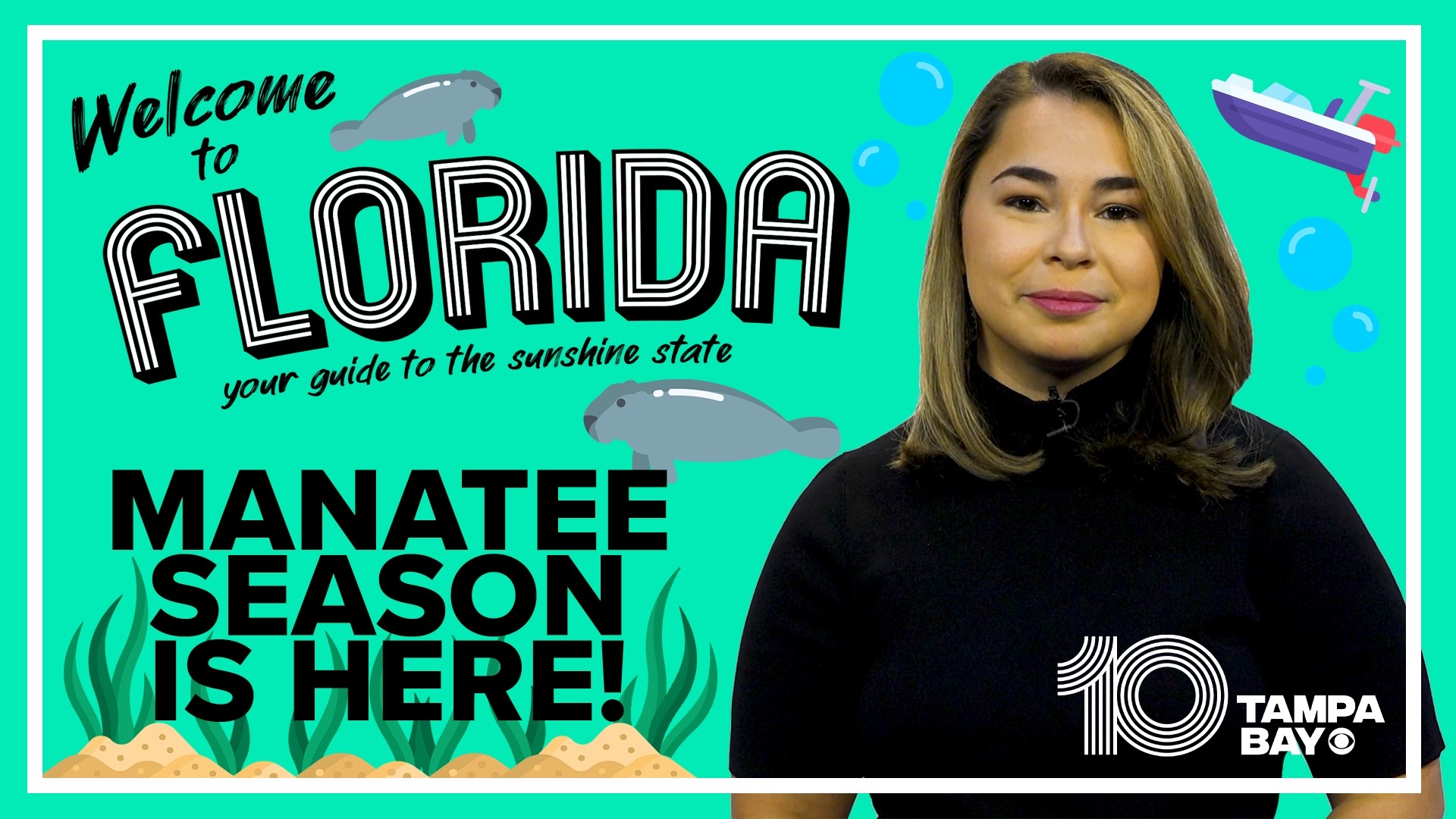TAMPA, Fla. — Florida has a ton of wildlife, and some are a lot more dangerous than others. But there is no animal as unique and adorable as the Florida manatee.
These gentle giants can be found all throughout Florida, in saltwater, freshwater, and even brackish environments. They slowly propel themselves through the water with an oar of a flipper, grazing on fields of seagrass. They’re fondly called sea cows, and we’re sure you can see why.
Eating all that seagrass, these mini-submarines can weigh as much as 1,200 pounds and live more than 60 years.
However, the story hasn’t always been a happy one for manatees, and right now, they’re facing tough times.
Manatees had been listed as an endangered species for several decades. In 1991, there were an estimated 1,200 manatees in Florida, according to state wildlife experts. Luckily, with conservation and rehabilitation efforts, those numbers have increased.
However, even with an increase in numbers, manatees are being lost at an alarming rate.
The Florida Fish and Wildlife Conservation Commission estimates more than 1,000 manatees died in 2021, due to a variety of reasons. One of the most common reasons involved collisions with boats.
However, there’s another big reason why manatees are dying, and it has to do with the water they live in.
In the past decade or so, parts of the Florida coastline have experienced awful algae blooms. The Indian River Lagoon on the state’s east coast has been particularly hit hard. The algae block a lot of light from reaching the seagrass on the ocean floor. As a result, the grass can’t get the light it needs, and it dies off quickly.
The manatees’ main food source is seagrass. With no food, these animals end up starving to death.
While scientists aren’t entirely sure of the source of these algae blooms, there are a few theories as to why this happens, and it starts with the water.
Manmade pollutants like fertilizer runoff and wastewater discharges are being expelled into estuaries. Tampa Bay is considered to be Florida’s largest open-water estuary.
However, the news isn’t all bad. Manatees have come a long way in several decades, increasing their numbers to anywhere between 7,500 to 10,200. They are also now considered threatened as opposed to endangered.
There are still plenty of places where you can view manatees living peacefully, like the Manatee Viewing Center at Tampa Electric in Apollo Beach.
If you want to get even closer to manatees, you can swim with them in certain areas like Crystal River, but there are plenty of rules you need to know about before jumping in. Since manatees are federally protected, there are a few extra laws to be aware of.
Several acts, including the Marine Mammal Protection Act of 1972, make it illegal to harass, hunt, capture, or kill any marine mammal, like the manatee. The Florida Manatee Sanctuary Act of 1978 prevents people from annoying, harassing, or disturbing any manatee.
This means if you even touch a manatee, you could face fines and even some jail time.
Depending on how much you bother a manatee, like one instance where the word "Trump" was marked into the back of one of these animals, you could face a fine of up to $50,000 and a full year in jail.
So, if you see a manatee in the wild, the FWC says it’s best to look, but don’t touch. Don’t feed them, don’t chase them. Basically, keep your distance and respect manatees in their natural habitats.
And, if you’re on a boat, give manatees plenty of space. Even if you only see one, there could be others nearby. Often, manatees will come to the surface and you’ll catch a glimpse of just their nose. But be aware there is plenty of manatee underneath the surface of the water, so keep your distance.
If you’re doing activities like fishing, be sure to clean up after yourself and don’t leave any fishing debris in the water. The FWC says manatees can become entangled in things like fishing lines, which could lead to injuries or even death.
Manatees aren’t just cute animals. They contribute a lot to the ecosystem, like preventing invasive vegetation and overgrowth, as well as fertilization for seagrasses. So, it is very important we all do our part to protect manatees and the habitats they live in.

